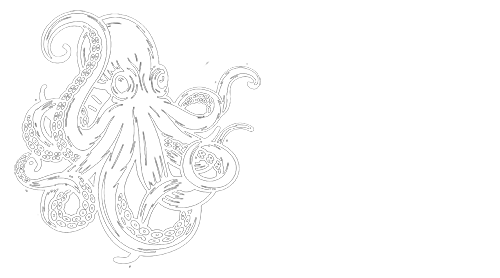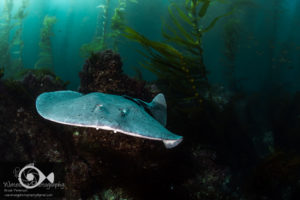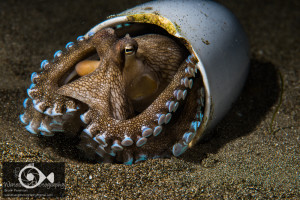Beautiful blue water behind a mesmerizing subject is one of the goals that every underwater photographer strives for. It is not always easy, especially if the water you are diving in isn’t a beautiful blue! This tutorial will address a few ways you can achieve great backgrounds in-camera, while giving your images a little creative punch.

Underwater photographers shooting with a DSLR or compact camera with a manual mode, have several options when it comes to capturing the color of the water behind a subject. These options include the ISO, aperture, shutter speed, and strobe use. I always shoot in manual mode when I am under water. It allows me to control how much light reaches my sensor.
In the photograph below, I used a higher ISO to boost the ambient light in the image. In this case, I had the ISO set to 500. This allowed more color and light saturation. Historically, DSLR’s have a lot of “noise” when the ISO is higher. However, the newer cameras are capable of getting a finer image with a higher ISO. This can be a great advantage to the underwater photographer.

Aperture is one of the tricky concepts when trying to control ambient light and get a bright blue background. Opening up the aperture does allow more light and may be necessary if you are using a high shutter speed. If for example, you are trying to freeze the sunbeams coming down through the water, you would want a high shutter speed to stop the light (1/250th or higher) and meter the background for aperture, so the sun isn’t too bright. This image has a shutter speed of 1/320th (the highest speed my strobes can sync with). The aperture is f/11.

A Hard and a soft coral bask in the sun
If you are using strobes, (and sunbeams aren’t a factor) I advise using an aperture of f/8 or above, and metering into the blue water for the shutter speed. The ISO may need to be a bit higher as well. The strobes fire at a fraction of the shutter speed and will freeze the subject so you can use shutter speeds as low as 1/13th, 1/25th, or 1/30th for close focus, wide angle shots, and macro shots. The image below has an ISO of 200, high aperture at f/18, and very slow shutter speed at 1/13th. The strobes fire at about 1/1000th of a second, so the movement of the subject is frozen because it is only lit up for a fraction of the time the shutter is open.

Macro shots can be very interesting when they utilize ambient light. This tiny nudibranch was created using a higher ISO (400) and shooting almost directly into the sun to get enough light to expose the blue background. Because I wanted a sharp focus on the entire nudibranch, I stopped down the aperture to f/36, and the shutter speed was metered against the sun to 1/80th.

Placida brookae
It has been very trendy lately to get a black background behind your subject. To achieve this, you need to have nothing but water behind your subject, and a high shutter speed. Here is the same nudibranch with drastically different settings: ISO 100, f/36, 1/320th. This lets in no ambient light. Only the strobe lights the subject. Which image do you like better?

Placida brookae
If you are new to underwater photography, you should spend some time experimenting with the aperture, shutter speed and ISO settings on your camera. Light plays such a big part in creating images, that it is arguably the most important concept to master as a photographer.





